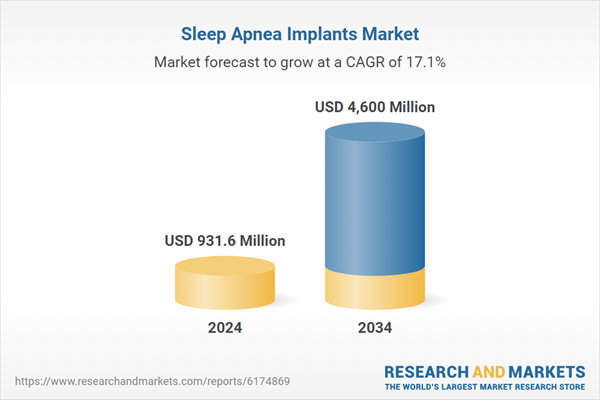This rapid growth is being propelled by the rising prevalence of obstructive sleep apnea, limited compliance with CPAP therapy, and increasing awareness of sleep-related health conditions. Sleep apnea implants provide an alternative to mask-based treatments, offering minimally invasive, mask-free solutions that stimulate airway muscles to prevent obstruction during sleep. These devices are gaining traction as many patients experience discomfort, intolerance, or inconvenience with conventional therapies. With clinical innovations and a growing focus on patient-friendly devices, implants are becoming a critical option for individuals seeking long-term, effective solutions. The market is also expanding due to growing physician support, technological advancements, and heightened recognition of the link between untreated OSA and cardiovascular, metabolic, and neurological risks. Major players such as Inspire, Nyxoah, and Asahi Kasei are shaping the competitive landscape, with larger companies leveraging extensive product portfolios and global reach while smaller firms drive growth through niche technologies and focused research efforts. Collectively, these dynamics are driving a transformative shift in sleep apnea treatment worldwide.
The hypoglossal neurostimulation devices segment held 86.7% share in 2024, supported by proven clinical outcomes, physician preference, and widespread adoption among patients intolerant to traditional therapies. The limited long-term adherence to CPAP, with only about one-third of patients maintaining consistent use, has further reinforced demand for implantable options that offer improved quality of life and convenience.
The obstructive sleep apnea segment held an 89% share in 2024, driven by the high prevalence of OSA and the shortcomings of conventional treatment methods. Millions of individuals remain undiagnosed, yet awareness of the condition’s connection to heart disease, diabetes, and cognitive decline is rising, driving the push for implant-based therapies that can deliver long-term benefits.
The hospitals segment generated USD 597.5 million in 2024, driven by the implant procedures. Their dominance stems from advanced infrastructure, availability of expert surgeons, and comprehensive post-operative care, ensuring safe implantation and ongoing monitoring of devices such as hypoglossal and phrenic nerve stimulators. Multidisciplinary teams and advanced diagnostic tools further strengthen hospital adoption rates.
United States Sleep Apnea Implants Market was valued at USD 840 million in 2024. Growth in the region is fueled by the high number of OSA patients, favorable reimbursement frameworks, and early adoption of implantable devices. A robust healthcare infrastructure, combined with active clinical research and the presence of companies like Asahi Kasei, Inspire Medical Systems, and Nyxoah, continues to drive the country’s leadership in this space.
Prominent players in the Sleep Apnea Implants Industry include Inspire, Nyxoah, and Asahi Kasei. To strengthen their foothold in the sleep apnea implants market, companies are implementing strategies centered on product innovation, clinical research, and regional expansion. Firms are investing heavily in developing minimally invasive, patient-friendly devices that improve adherence compared to traditional therapies. Expanding clinical trial programs is also critical to validate efficacy, secure regulatory approvals, and build physician confidence.
Comprehensive Market Analysis and Forecast
- Industry trends, key growth drivers, challenges, future opportunities, and regulatory landscape
- Competitive landscape with Porter’s Five Forces and PESTEL analysis
- Market size, segmentation, and regional forecasts
- In-depth company profiles, business strategies, financial insights, and SWOT analysis
This product will be delivered within 2-4 business days.
Table of Contents
Companies Mentioned
The key companies profiled in this Sleep Apnea Implants market report include:- Asahi Kasei
- Inspire
- Nyxoah
Table Information
| Report Attribute | Details |
|---|---|
| No. of Pages | 130 |
| Published | September 2025 |
| Forecast Period | 2024 - 2034 |
| Estimated Market Value ( USD | $ 931.6 Million |
| Forecasted Market Value ( USD | $ 4600 Million |
| Compound Annual Growth Rate | 17.1% |
| Regions Covered | Global |
| No. of Companies Mentioned | 4 |









